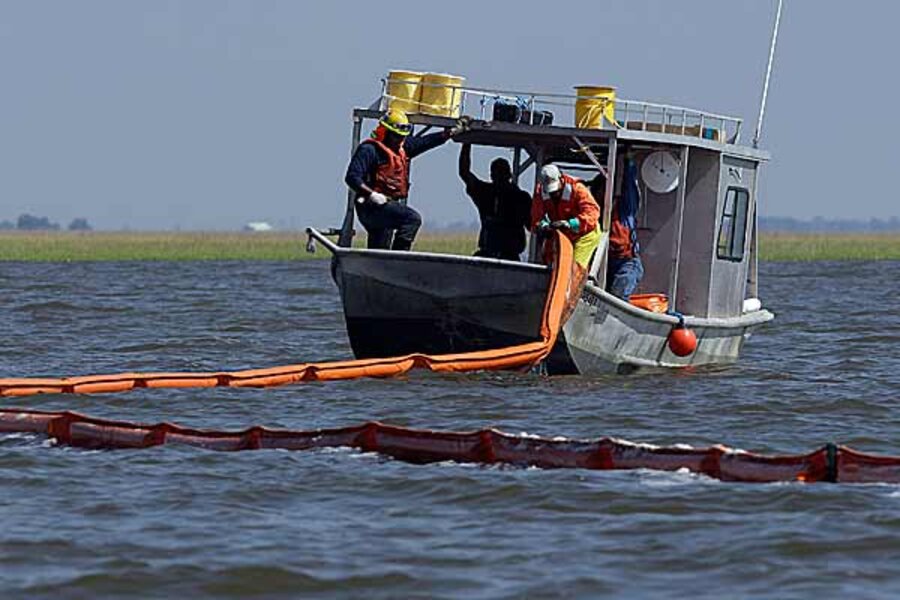Containment boom effort comes up short in BP oil spill
Loading...
Containment booms are one of the main weapons in the fight to corral the BP oil spill. But some US lawmakers and local officials are becoming increasingly concerned that the booms aren’t working as intended along the US Gulf Coast.
There is much more shoreline to protect than lengths of boom to protect it, they say. Rough weather has washed oil over the barriers, and inexperienced operators haven’t laid them correctly.
"The boom is not working ... it is a joke,” says Billy Nungesser, president of Plaquemines Parish, Louisiana, at a Thursday Senate hearing. “It washes up on the shore with the oil, and then we have oil in the marsh, and we have an oily boom. So we have two problems.”
IN PICTURES: The Gulf oil spill's impact on nature
The only booms that are working well are those laid in open areas of ocean, says Sen. Mary Landrieu (D) of Louisiana. They can capture areas of oil for removal.
Booms laid near coasts only work in calm seas and are tending to break up, Sen. Landrieu said at a Thursday hearing before a Senate Homeland Security Committee ad hoc subcommittee.
“I hope we don’t spend the next 60 days on phone calls [with cleanup officials] talking about booms ... because I am about up to here with that,” said Sen. Landrieu, expressing annoyance.
Oil containment booms are temporary floating barriers composed of plastic, fabric, and other buoyant materials. They are meant to both prevent oil spills from washing up on beaches or marshes, and to concentrate the spill enough so it can be skimmed or vacuumed from the surface by other equipment.
So far BP and the Coast Guard have some 2.7 million feet of boom either deployed or ready to deploy, said Coast Guard Adm. Thad Allen, the National Incident Commander, at a media briefing Friday.
Records maintained by the Coast Guard indicate that there are about 3.1 million feet of coastal protection boom available in the US, and about 430,000 feet of heavier-duty boom intended for use in open oceans.
Right now some 400 skimmers are on duty in the Gulf, according to Allen. These have skimmed about 2.8 million gallons of petroleum-fouled water, removing about 320,000 gallons of oil.
Booms might look as if they are simple to use, but they are not, according to federal officials. They must be tended to make sure they don’t drift away from the spot they are supposed to protect. They also cannot be put out too early – if they are, they can break up or become ineffective before oil actually arrives.
“We’ve already seen [that happen] with boom that’s in the Gulf,” Juliette Kayyem, Assistant Secretary of Homeland Security for Intergovernmental Affairs, told senators Thursday.
The Coast Guard and other organizations involved in the oil spill response effort will be doing a risk analysis over the next several days to figure out how to mass cleanup forces most effectively, Allen said Friday. In particular, they will look at what to do from the shoreline out to about 50 miles at sea.
“As the oil gets there, it disaggregates into smaller flows. And we’re trying to figure out how to attack that with more skimming capacity and capability moving forward,” Allen told reporters.
Related:
- Gulf oil spill: Why booms, in short supply, may not save the day
- One place in Louisiana people are praising BP
- Gulf of Mexico oil spill: Once again, US military gets the call
IN PICTURES: The Gulf oil spill's impact on nature





